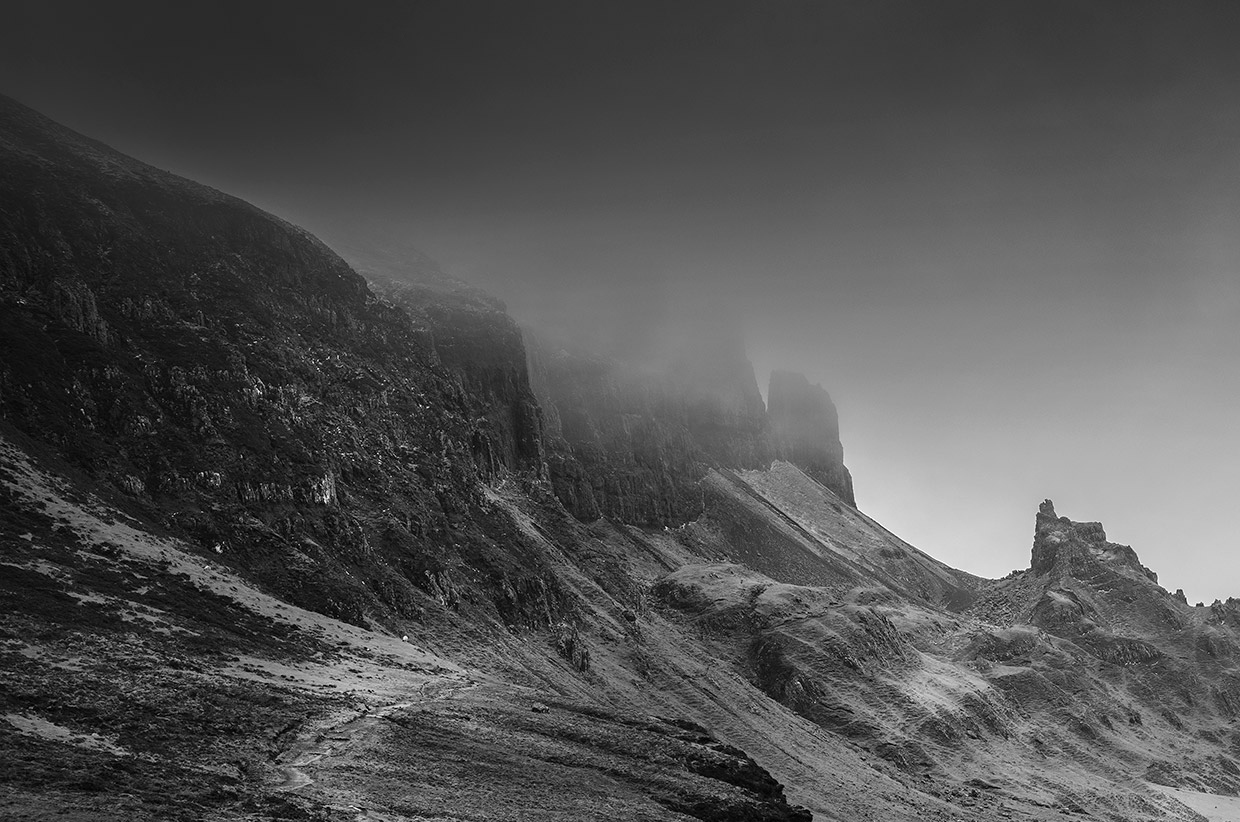Review: Fjällräven Keb Eco-Shell
Gear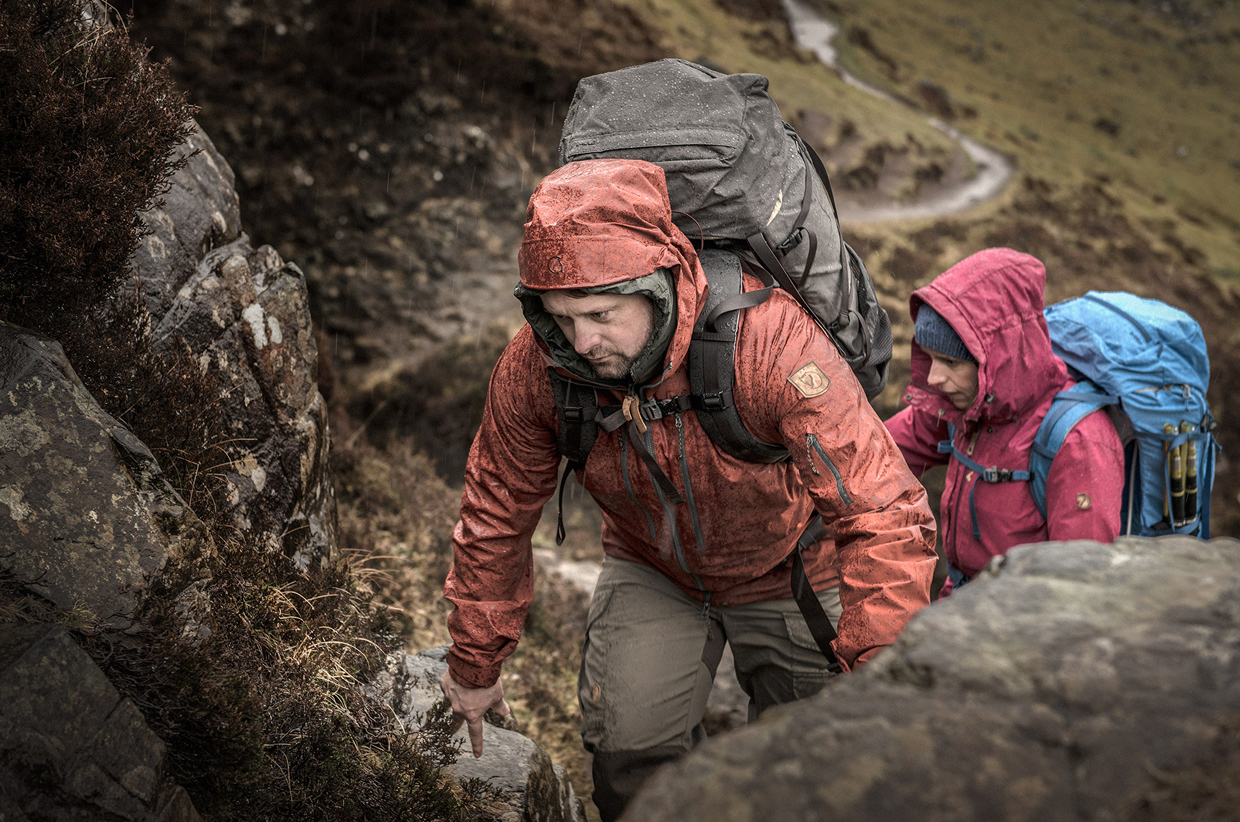
Great rains over the Little Minch
Written by Daniel Neilson // Photos by Anders Brogaard
We could see it coming. The rain fell over Harris, shading the landscape behind it a pencil grey. Above us, the clouds, shaped like a child would draw, sped across the sky. Sunshine warmed our faces despite the biting March winds. The block of rain began to cross the channel towards us between the Outer Hebrides and the Isle of Skye, throwing boats into a maelstrom. As we climbed higher and higher towards the Trotternish Ridge, I knew we would be more exposed: it wouldn’t be pleasant, but we also saw the sunlight behind it. The rain would be shocking but short.
The Isle of Skye is tucked in behind the Outer Hebrides, but it offers little protection from the storms that build up over the North Atlantic. As all early risers know, the Shipping Forecast rarely predicts a benign day for the Hebrides: ‘five maybe six, rising to seven later’. The inshore water between the Outer Hebridean islands of Harris and North Uist is, pleasingly, known as The Little Minch. On the day we are walking, the ferries across this channel to Harris are cancelled – rare even in these parts. The blue men of the Minch will be quiet today.
The storm kelpies or blue men of the Minch are mythological creatures that hunt for sailors to drown and boats to sink. They are said to be almost human-sized but with the power to create great storms, writhing and diving through storms like a porpoise. The blue men were once part of a tribe of fallen angels. Some became fairies, others the dancers creating the northern lights, and the blue men, raging havoc on the seas. Sometimes the blue men talk to their victims: ‘Man of the black cap what do you say; As your proud ship cleaves the brine? My men are eager; my men are ready; To drag you below the waves.’
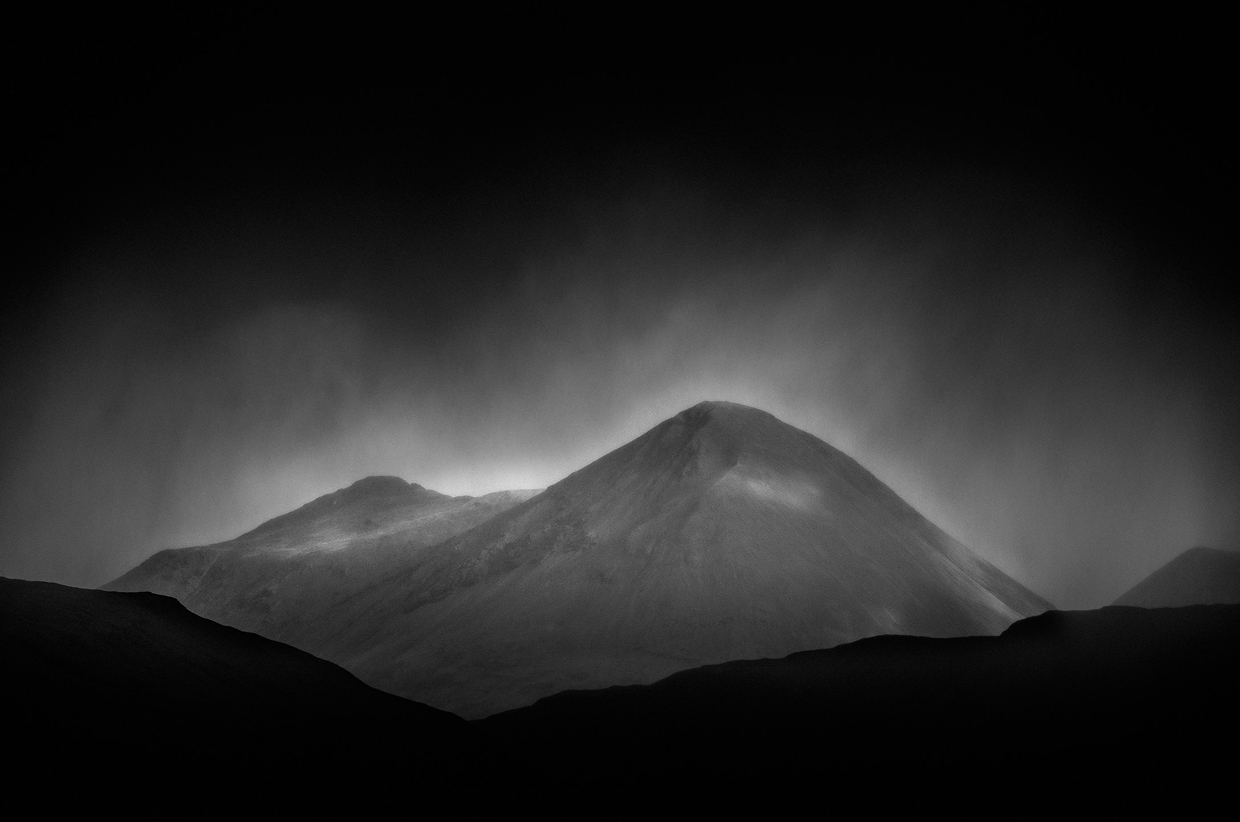
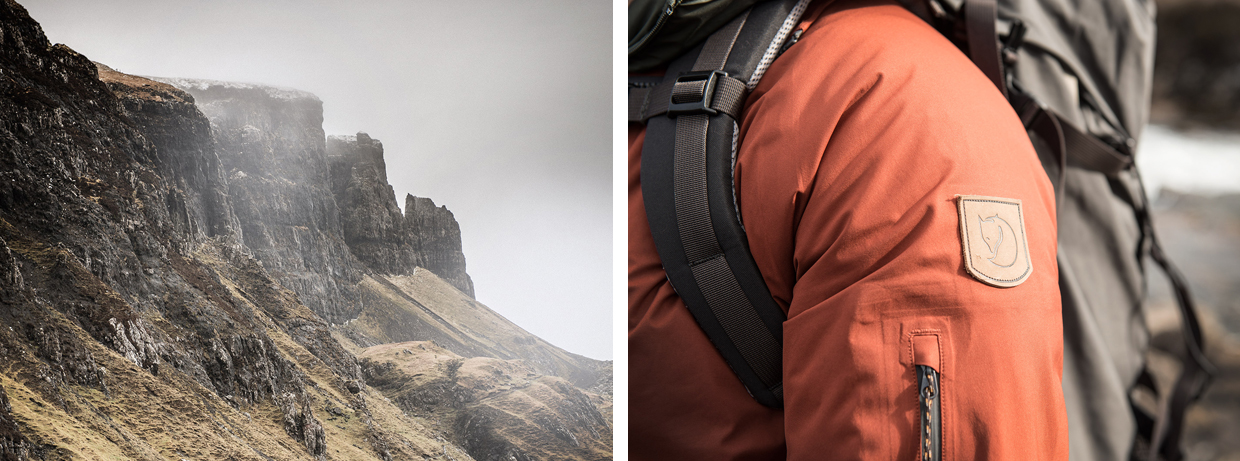
The wind rises as the sky darkens. The rain will arrive any second. We stop and pull out our waterproof jackets, Fjällräven’s Keb Eco-Shell, and slip them over out mid layers. There is little in the way of a warm-up, just the thunderous rain on our hoods. Nor is there anywhere to shelter as we climb towards the great Trotternish Ridge of Skye on our two-day walk that will see us travel through the ethereal landscape of the Quiraing to the Lookout bothy on the far northern tip of the island. The aspect on these hills is bare but for the stoic sheep and occasional sheepfold. We have no recourse but to continue in the rain. After all, we know it will soon stop. We endure about 10 minutes of one of the most ferocious downpours I’ve experienced, and just as suddenly it disappears. The sun is out, and our jackets are put away.
The waterproof jacket is a tool against the weather, another weapon in the arsenal that makes walking in all seasons possible. And like a good tool, it should be simple to use, even in the worst conditions. Zips need to work and be easily pulled with gloves, for example. Fjällräven, a Swedish company that excels with cold-weather gear, knows this of course. Simplicity seems to be one of their mantras, and strengths. At extremes of weather, the over-engineering of outdoor clothing and equipment is, at best, a pain.
The Keb Eco-Shell is a generous coat, one that quickly slides over fleeces and warm layers. There’s a give in the material too that follows the body without effort. There are two large chest pockets, easily big enough to swallow an Ordnance Survey map, and high enough to sit above the waist belt of a bag. There are another couple of mesh pockets on the inside and a small pocket on the arm. Although we found the jacket breathable, there are also two ventilation zips that allow access to the pockets of the garments underneath. The hood is particularly well-designed: easy to adjust and moves well with the head.
Perhaps the most crucial aspect of this jacket, given away by its name, is the Eco-Shell material. Many waterproof jackets use a durable water-repellent (DWR) treatment, sometimes made from harmful chemicals including fluorocarbons that contaminate the environment when the garment is washed. DWR is the stuff that makes water bead off on new jackets, but it also remains in the environment and food system. The Keb Eco-Shell doesn’t use fluorocarbons in the treatment impregnated in the polyester. At the moment, fluorocarbon-free DWR isn’t as long-lasting as those that have fluorocarbons, meaning that it will probably need retreating sooner – about every other wash – but that’s a tiny price to pay for helping to prevent the damage that fluorocarbons can wreak on the environment.
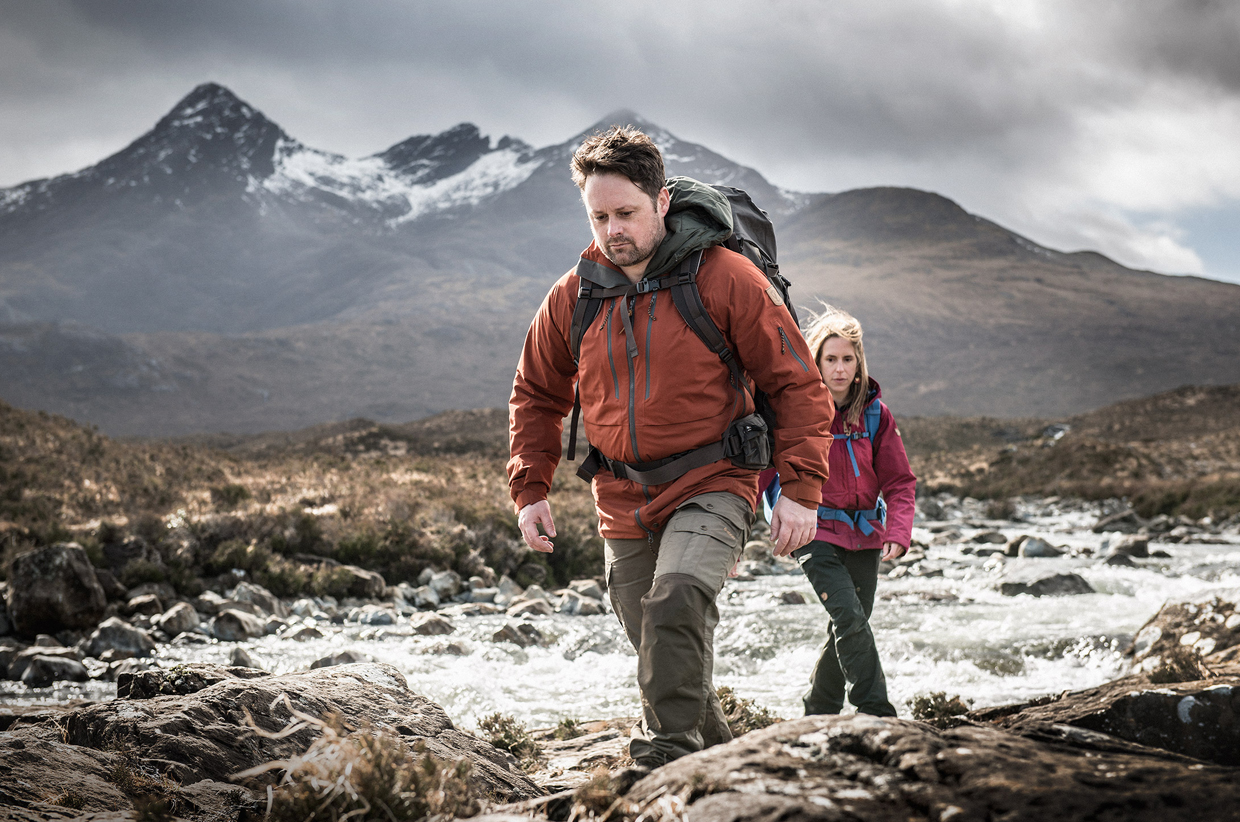
There is little that looks delicate about Skye, with its vast basalt towers and foreboding Black Cuillin, but this ecosystem is a gentle interplay between the weather, the land and its inhabitants – human, plant and animal.
We look back west, and sure enough, another lead-grey shower is speeding its way to us. We have about five more minutes, but it will hit us with inevitable force. We put our jackets back on and put our cameras away, and continue along the ridge. The blue men of the Minch are angry today, but we merely pull up our hoods and see the continuous drama of the weather-hit mountains unfold before us in spectacular style.
To read the full feature Beyond see www.sidetracked.com/beyond
